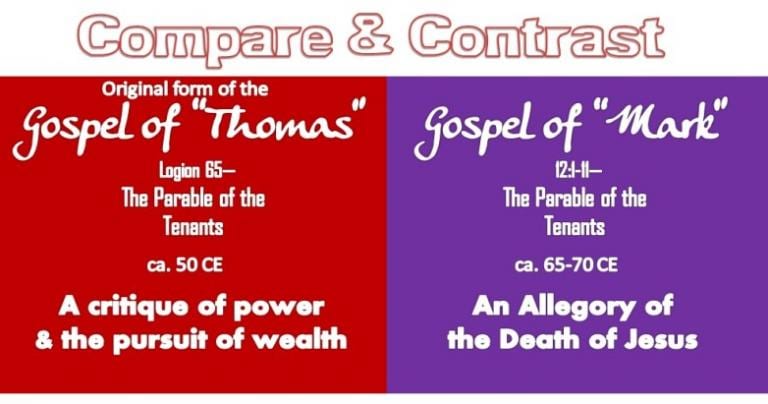
Sowing Seeds of deeper understanding, this post is all about understanding the parables of Jesus and how they evolved in the Gospel traditions and beyond.
In this Sunday’s Gospel we delve into parables in “Matthew,” specifically, a parable concerning sowing and a teaching on hearing and interpreting (Matthew 13:1-23). The author called “Matthew” interprets Jesus’ parable (13:18-23). According to this unknown, anonymous evangelist, “the seed” is Jesus’ proclaimed theocracy (kingdom of sky vault). But ultimately, Israelites must do more than simply hear Jesus’ word—they must also respond and change. Therefore, actions must accompany beliefs.
Jesus taught in special stories called parables. A very wise and happy wanderer once taught me something sublime and life-changing: “the shortest distance between truth and a human being is a story.” The prepaschal Jesus understood this wisdom very well. Therefore, the folk healer Jesus was also a master storyteller.
Sowing Seeds into Parables & Allegories
Going by Context Group scholar Richard Rohrbaugh, we can define parables thus—
Parables
Metaphors or similes drawn from nature or common life, sometimes exaggerated to catch attention. Parables usually have one big point or punchline, the meaning of the story.
But it is important to recognize that parables are not allegories!
Allegories
A story that can be interpreted to reveal a hidden meaning, typically a moral or political one. In allegories, every detail can mean something else.
Parables ≠ Allegories!
Why is this distinction important? Since the very beginning of the Body of Christ, believers have been turning Jesus’ parables into allegories. That’s already happened in today’s Gospel reading. Imagine that Jesus told his original (lost) version of the Sower story sometime in the late 20s CE. Contrast that with when “Matthew” spun it into today’s inspired Gospel in the 80s CE. In between, some significant changes went down!



Basically, “Matthew” re-contextualized and allegorized Jesus’ parable. It no longer has only one meaning, one big “punchline-point” as typical of parables. Instead, every element of it has been given a special meaning by “Matthew,” or the Matthean Jesus group. Now we are talking allegories, not a parables, folks.
This was bound to happen! Whenever you move language, whether words or sentences, the meaning inevitably changes. As Jesus’ parables percolated throughout the Mediterranean, these stories took on local flavors, got reshaped by changing circumstances and issues faced by different Jesus groups. This helps explain the significant variation we see in different Gospels presenting the same basic parable. Like here:

And the allegorizing didn’t stop with the Gospel authors. In fact, much of Church history demonstrates a predilection for allegory-gone-wild. Because this was so, early believers thought that even the most insignificant of details Jesus said or did was loaded with a treasury of cryptic meaning.
Be that as it may, don’t think this disproves inspiration of the salvific truth of Scripture. Ultimately, God works through that messiness, ladies and gentlemen, so don’t fret. Inspiration, like Incarnation, is messy! Ultimately, God’s saving love is messy.
The Dark Side of Allegory-Gone-Wild
But let’s face it—there is a dark side to this allegorizing, also. A disgusting tendency towards antisemitism was introduced long ago in Church history. It disfigures the Church and can’t be denied, although many, even popes, have tried. This evil is clearly seen everywhere in the commentaries on the parables written by Church Fathers, be they Syriac, Greek, and Latin. Honest readings of the Patristics likewise reveal an addiction for allegory-gone-wild.
Why was such vile cruelty added onto Jesus’ already allegorized parables? Once Emperor Constantine arrived to Christen Imperial Christianity, life in Christ inevitably blended with all things imperial (including imperial cruelty). This resulted in the proliferation of horrific allegories. Eventually this would enable pogroms and atrocities, all theologically justified in the name of Christ.
Sowing Understanding & Invitation
I would like to invite you to explore the parables deeper. To that end here is an entire playlist from the “Bible Alive Presentations” YouTube channel that breaks things down by exploring the five most difficult parables of Jesus. These 51 videos are eye-opening, my friends. All of them are free of charge, and it’s like take a course on the parables. If you would like to better understand Jesus, what his life was like in the Galilee, and what his project was all about, this playlist will be of great help.
All of the videos on this playlist are from a workshop on Jesus’ parables. In the Sunday readings ahead, we are going to be spending time in Matthew’s re-contextualized versions of Jesus’ parables. It’s a good time to be better equipped at understanding these stories. Here are the links to the playlist:
















